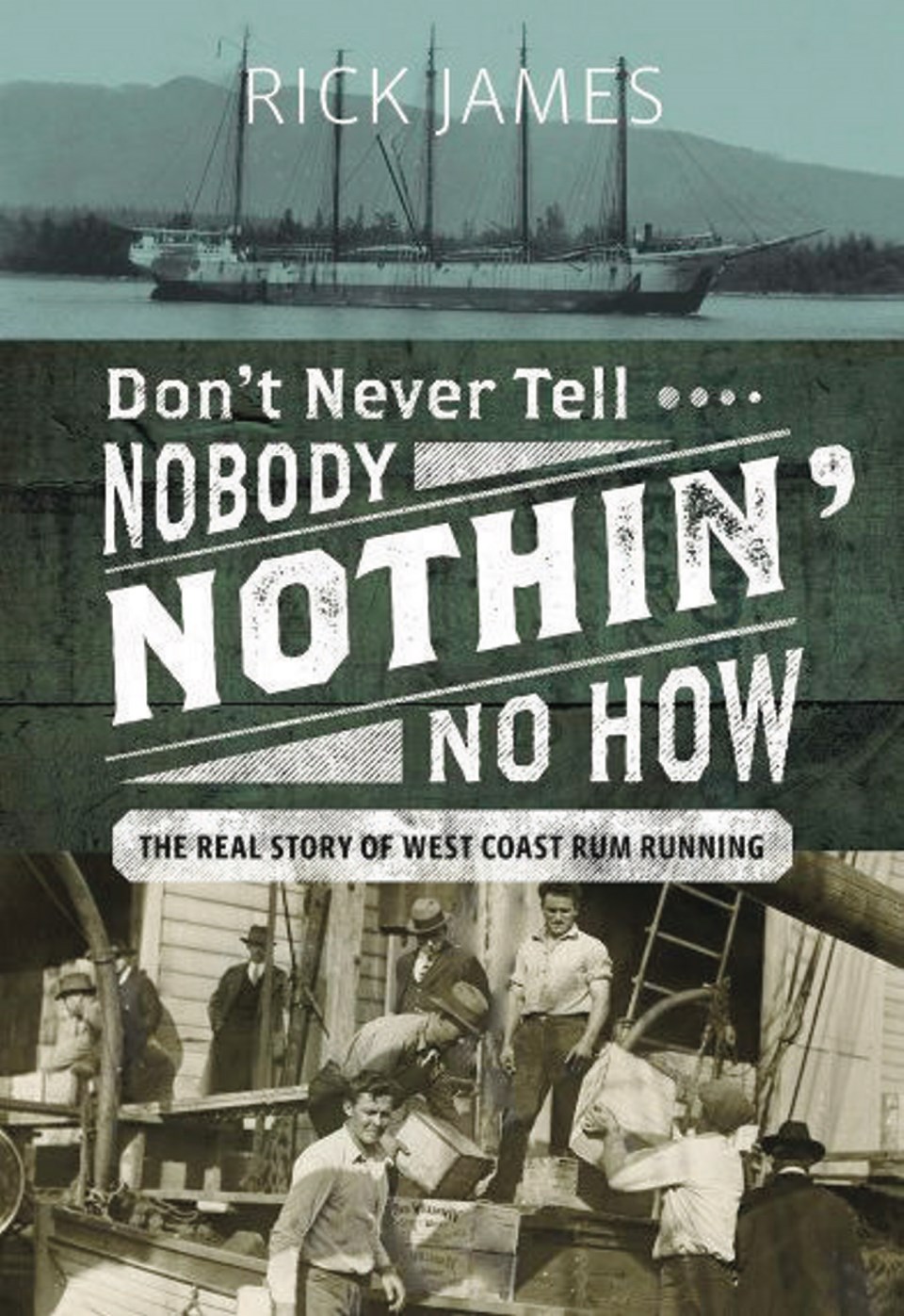Don’t Never Tell Nobody Nothin’ No How: The Real Story of West Coast Rum Running
By Rick James
Harbour Publishing, 312 pp., $32.95
Think of them as entrepreneurs, men who saw a future — and quick profits — in the import and export business.
They saw opportunity in Prohibition in the United States, the effort to stamp out alcohol consumption by severely limiting the supply. Prohibition did not work; it was, in fact, a disaster, one that cost lives and created a thriving criminal element.
Just as surely as water runs downhill, liquor will find its way to the hands of those who want it.
Here on the Pacific coast, rum running became a viable business, in a “don’t ask, don’t tell” sort of way.
 In this book, historian Rick James gives us a comprehensive look at an industry that was decidedly outside the law.
In this book, historian Rick James gives us a comprehensive look at an industry that was decidedly outside the law.
The Canadians in the trade were, he says, relatively civilized, going about their business with a minimum of fuss, not counting the occasional hijacking, of course.
There was also murder — a gruesome, cold-blooded murder east of Sidney Island in September 1924. A father and son were trying to deliver liquor to an American boat when their own vessel was hijacked. Both were killed, with their bodies cut open and tossed overboard.
Three men were charged in connection with the murders. Two of them were found guilty and hanged in the Oakalla penitentiary in 1926.
We might think of the rum-running trade as a local activity, between Vancouver Island and American ports. But as James explains, much of the activity was far away, outside of Canadian or American waters, and as far south as Ensenada in Mexico.
Much of the illicit liquor was brought here on large mother ships, with loads distributed to smaller, faster boats that could escape the watchful eyes of the authorities.
The industry faded away after the U.S. ended Prohibition in 1933. While it lasted, it provided many locals with a means to make money in an illegal way.
James has brought information together from a wide variety of sources, including newspapers, books, magazines, archival records, interviews and correspondence, and oral-history recordings.
He has done a masterful job of bringing the story together, and the result is a highly detailed, highly readable account of an industry that operated, for obvious reasons, out of the limelight.
And now, despite the plea in the book’s title, he is telling all. It’s about time.
Dave Obee is the editor and publisher of the Times Colonist.